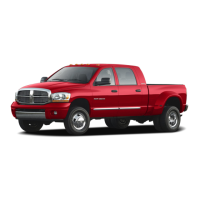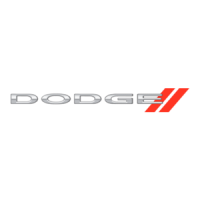
Do you have a question about the Dodge 2008 Avenger and is the answer not in the manual?
| Brand | Dodge |
|---|---|
| Model | 2008 Avenger |
| Category | Automobile |
| Language | English |
Essential safety guidelines and potential damage warnings for vehicle operation.
Location and purpose of the VIN for vehicle identification.
Warnings about modifying the vehicle's safety and roadworthiness.
Information about vehicle keys, including Sentry Key and ignition key removal.
Details on the Sentry Key system for preventing unauthorized vehicle operation.
Operation of the Vehicle Security Alarm system for unauthorized entry detection.
Functionality for locking/unlocking doors and trunk remotely.
Overview of safety features including seat belts and airbags.
Critical safety advice on child passenger restraint in rear seats and proper seat belt usage.
Adjustment and types of interior and exterior mirrors for visibility.
Operation and features of the voice-activated UConnect communication system.
How to use the vehicle's voice recognition system for various controls.
Manual and power adjustments for front seats, including lumbar support.
Programming and use of the HomeLink system for garage door control.
Operation and features of the power sunroof system.
Detailed explanation of gauges, warning lights, and indicators on the instrument cluster.
Functionality and indicators of the airbag system warning light.
Meaning and action required when the Malfunction Indicator Light illuminates.
Functionality and indicators for ESP and TCS systems for vehicle stability.
Warning indicator for low tire pressure and system malfunctions.
Features and displays of the driver-interactive EVIC system.
Steps for starting the engine, including automatic transaxle operation.
How to use the remote start system for convenience and security.
Proper shifting procedures and precautions for the automatic transaxle.
Safety system preventing gear shifts without brake pedal engagement.
Precautions for safe driving in adverse conditions like rain or snow.
System operation, warnings, and maintenance for monitoring tire pressure.
Recommended fuel types, octane ratings, and additives for optimal engine performance.
Proper use of hazard warning flashers for disabled vehicles.
Steps to take if the engine overheats to prevent damage.
Procedures and safety precautions for changing a flat tire.
Safe and correct methods for jump-starting a vehicle with a dead battery.
Techniques for getting the vehicle unstuck using a rocking motion.
Guidelines for safely towing the vehicle, including ignition and gear selector positions.
Functionality of the OBD II system and Malfunction Indicator Light (MIL).
General maintenance tasks and required services based on mileage and time.
Procedures for checking oil level, selecting oil, and changing oil.
Periodic inspection of brake system components for performance.
Checking and maintaining the brake fluid level.
Location and description of fuses within the TIPM.
Tips for preparing for and obtaining vehicle service.
Steps to take for vehicle-related issues and contacting support.
Contact information for customer assistance in the US.
Specialized assistance for customers with hearing or speech impairments.
Details on the terms and provisions of the New Vehicle Limited Warranty.
Procedures for reporting vehicle safety defects to authorities.
Explanation of DOT tire grading for Treadwear, Traction, and Temperature.











